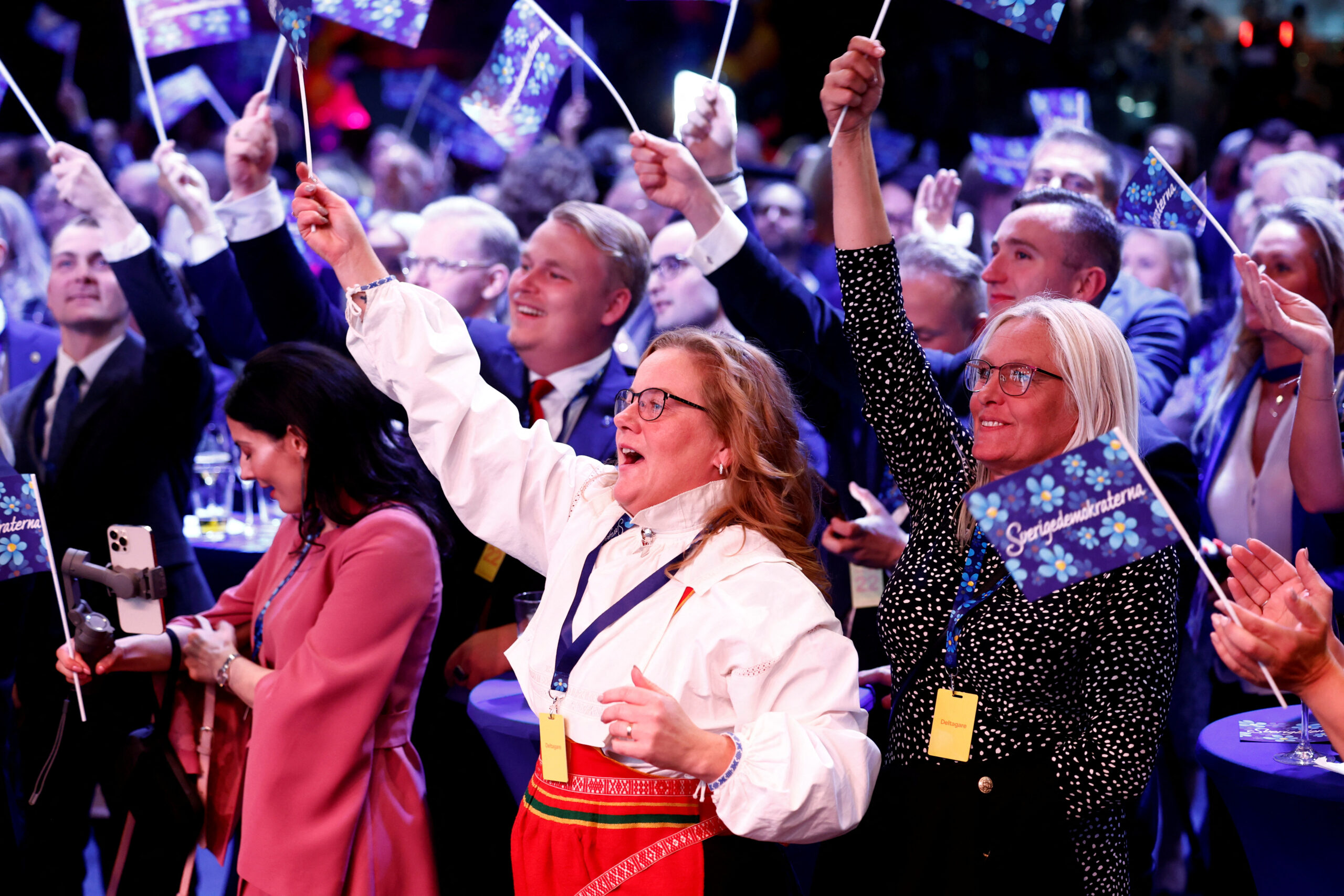Sweden Was Never the Progressive Haven You Thought It Was

At the writing of this piece, the final votes are being counted in the Swedish general election. Barring the unexpected, the right-nationalist bloc – made up of the Liberals, Moderates, Christian Democrats and Sweden Democrats – will be declared the winner by the slimmest of margins and will hold a majority of just one seat in parliament. This is not the big news, however; Sweden has had rightwing governments before. The big news is that the largest party within this bloc will be the Sweden Democrats, a far-right party with roots in the neo-Nazi movement.
The Sweden Democrats has seen a steady increase in support since their first serious run at parliament in 2006, when they got 2.9% of the vote. This became 5.7% in 2010, 12.9% in 2014, 17.5% in 2018 and now, 20.5%. Meanwhile, the influence of the party on national politics has far outstripped its polling.
In recent years, political discourse in Sweden on immigration and crime has taken a markedly rightward shift. In 2014, and in response to the influx of refugees from Syria, then prime minister Fredrik Reinfeldt (of the conservative Moderate party) encouraged Swedes to “open their hearts to the very vulnerable people we now see around the world”. In 2015 his successor, the Social Democrat Stefan Löfven, said that “my Europe doesn’t build walls, we help when the need is great”. How is it that just three years later, Löfven decried the arrival of “hundreds of thousands of economic migrants” in Europe? That in 2020, his party tweeted, “Uncontrolled labour immigration reduces Swedish wages, plunders our welfare, exploits foreign labour and contributes to the financing of organized crime”? Whatever rhetorical solidarity once existed in Sweden was rapidly evaporating.
It disappeared altogether when, in an effort to tempt supporters away from the far-right Sweden Democrats, political parties vied to talk toughest on immigration and crime. This included proposals to deport foreign nationals simply for being related to criminals (Moderates), to DNA test individuals suspected of being in Sweden illegally (Christian Democrats) and language test two-year-olds (Liberals).
Anti-immigration talk was also heard from the left, and in terms that would have caused a political scandal just a few years earlier. In August, Social Democratic integration and migration minister Anders Ygeman suggested that Sweden should limit the percentage of people of “non-Nordic background” able to live in given parts of the city, arguing that if more than half of the people living in an area are “non-Nordic”, the area could be “at risk.” By “non-Nordic”, Ygeman didn’t mean white French, American or British people.
Even when leftwing politicians intervened with good intentions, the decaying public discourse produced jarring comments: arguing for the need to avoid ethnic and economic segregation in Swedish cities last month, the current (and likely outgoing) prime minister Magdalena Andersson stated, “We don’t want Chinatown, Somalitown or Little Italy [in Sweden].”
For those outside of Sweden, the results of the election may seem surprising. A big part of that surprise has to do with the international perception of Sweden as egalitarian, social democratic and progressive – an image rooted in myth and fairytale. Sweden was a multicultural country decades before refugees from Syria began arriving in large numbers in 2014 and 2015. It was also a country beset with racism and xenophobia, social and economic inequality that the pandemic exposed, with low-income Swedes and those born in Iraq, Syria and Somalia infected with and dying from Covid-19 at far higher rates. In other words, a country like any other.
Having lived here for over 15 years, it’s hard to overstate how important the idea of racial homogeneity is to Sweden’s international mythology. In July 2019, for example, the New York Times ran a piece headlined “Changing Face of Sweden: Boon or Burden?”, illustrated with a full-page picture of a dark-skinned man. For the New York Times, immigration to Sweden only began with Syrians seven years ago, not back in the 1970s with refugees from Chile and Iran, in the 1980s with Kurdish refugees, in the 1990s with refugees from Bosnia, or in the early 2000s with refugees from Iraq. You can’t be Swedish if you aren’t white, and we certainly can’t be sure you won’t be a burden.
As Sweden faces a new government that will willingly collaborate with the far right in exchange for power, the political landscape in Sweden has likely changed forever – and as a direct result of a willingness to buy into nationalist mythologies.
Christian Christensen is a professor of journalism studies at Stockholm University.


